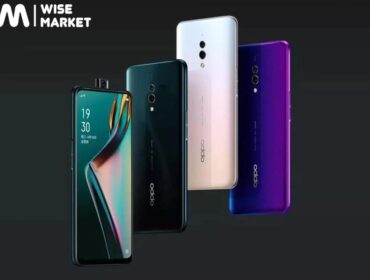Virtual Reality in Entertainment: A Comprehensive Exploration
1. Introduction: The Virtual Revolution
Virtual Reality (VR) has emerged as a revolutionary force, transforming the entertainment landscape and offering users an unparalleled level of immersion. This comprehensive article explores the multifaceted role of Watch Telecinco in UK in entertainment, from its inception to the latest technological advancements, and delves into its impact on gaming, storytelling, live events, healthcare, and the challenges and opportunities shaping its future.
2. Understanding Virtual Reality
2.1 Defining the Virtual Realm
Virtual Reality is an interactive, computer-generated experience that simulates an environment, often through the use of VR headsets and motion controllers. This technology aims to create a sense of presence, enabling users to interact with and navigate through digital spaces.
2.2 Components of Virtual Reality Systems
- VR Headsets: These devices, such as Oculus Rift, HTC Vive, and PlayStation VR, provide the visual and auditory stimuli necessary for a virtual experience.
- Motion Controllers: Handheld devices that allow users to interact with the virtual environment, enhancing the sense of immersion.
- Sensors and Trackers: Devices that monitor the user’s movements, ensuring that their actions are accurately reflected in the virtual space.
3. Virtual Reality in Gaming: A Paradigm Shift
3.1 Gaming Beyond the Screen
Virtual Reality has redefined the gaming landscape by immersing players directly into the Watch Telecinco in UK of the action. The transition from traditional gaming to VR offers a level of engagement that transcends what conventional platforms can provide.
3.2 Evolution of VR Gaming
The evolution of VR gaming has seen the emergence of titles like “Beat Saber,” “Half-Life: Alyx,” and “Boneworks,” showcasing the potential for interactive and immersive experiences. The demand for VR gaming content continues to drive innovation in the gaming industry.
3.3 VR and eSports Convergence
The convergence of VR and eSports opens new dimensions for competitive gaming. Titles like “Echo VR” and “Onward” introduce VR-specific challenges and opportunities, fostering a new era for both casual and professional gamers.
4. Virtual Cinemas and Immersive Storytelling
4.1 Cinematic Experiences in Virtual Reality
Virtual Reality has unlocked new avenues for cinematic storytelling. VR films and experiences allow users to step inside narratives, providing a sense of presence and agency. This shift in storytelling dynamics has the potential to redefine traditional filmmaking.
4.2 VR Documentaries and Educational Content
Watch Telecinco in UK extends beyond traditional entertainment, offering educational experiences. Virtual documentaries allow users to explore historical events, scientific phenomena, and cultural landscapes in ways that traditional media cannot replicate.
4.3 VR and Interactive Narratives
The interactive nature of VR facilitates immersive storytelling. Narratives can adapt to user choices and interactions, creating a personalized experience that goes beyond the passive consumption of traditional media.
5. Virtual Reality in Live Events and Tourism
5.1 Virtual Concerts and Events
The entertainment industry has embraced Watch Telecinco in UK to bring live events to global audiences. Virtual concerts and events, whether in gaming environments or dedicated VR spaces, offer an immersive alternative to physical attendance.
5.2 Virtual Tourism and Cultural Exploration
Virtual Reality serves as a powerful tool for tourism, allowing users to explore iconic landmarks, museums, and historical sites from the comfort of their homes. This application not only broadens accessibility but also promotes cultural exchange.
5.3 Corporate Events and Virtual Collaboration
In the business world, VR is revolutionizing corporate events and collaboration. Companies use VR platforms to conduct virtual conferences, team-building exercises, and collaborative workspaces, transcending geographical barriers.
6. Healthcare and Therapy through Virtual Reality
6.1 Therapeutic Applications of VR
Virtual Reality is making significant inroads into healthcare, offering therapeutic interventions for mental health issues and chronic pain management. VR environments provide a controlled space for exposure therapy, stress reduction, and pain distraction.
6.2 Medical Training and Simulation
The medical field embraces VR for training and surgical simulations. VR environments enable medical professionals to practice and refine their skills in a risk-free, realistic setting, contributing to improved patient care.
6.3 Rehabilitation and Physical Therapy
VR is becoming an integral part of rehabilitation and physical therapy. Tailored VR exercises assist individuals in regaining motor skills and mobility, adding an engaging aspect to the recovery process.
7. Challenges and Future Developments
7.1 Technological Challenges
Despite rapid advancements, challenges such as motion sickness and the need for higher resolutions persist. Continued research and innovation are crucial to addressing these technological hurdles and enhancing the overall VR experience.
7.2 Accessibility and Cost Factors
The accessibility of VR remains a concern due to the cost of high-quality headsets. However, as technology progresses and becomes more affordable, broader adoption is likely, making VR more inclusive and accessible to diverse audiences.
7.3 Social and Ethical Considerations
The immersive nature of VR raises social and ethical considerations, particularly regarding privacy and the potential impact on social interactions. Striking a balance between technological advancement and ethical responsibility will be essential for the sustainable growth of VR.
8. The Future of Virtual Reality: Beyond the Horizon
8.1 Technological Advancements
The future of VR holds exciting technological advancements, including improvements in hardware, display technologies, and haptic feedback. These innovations aim to enhance the realism and immersion of virtual experiences.
8.2 Integration with Augmented Reality
The integration of Virtual Reality with Augmented Reality (AR) is on the horizon. The combination of these technologies has the potential to create seamless mixed-reality experiences, merging the virtual and physical worlds.
8.3 VR in Everyday Life
As VR becomes more mainstream, its integration into everyday life is anticipated. From virtual shopping experiences to virtual workspaces, the applications of VR are poised to extend beyond entertainment, shaping various aspects of daily living.
Virtual Cinemas and Immersive Storytelling
4.1 Cinematic Experiences in Virtual Reality
Virtual reality has expanded storytelling into the realm of immersive cinema. VR films and experiences allow viewers to step inside narratives, providing a sense of presence and agency as they explore virtual worlds and narratives.
4.2 VR Documentaries and Educational Content
Beyond entertainment, VR has become a powerful tool for educational purposes. Virtual documentaries enable users to explore historical events, scientific phenomena, and cultural landscapes in an interactive and engaging manner.
5. Virtual Reality in Live Events and Tourism
5.1 Virtual Concerts and Events
The entertainment industry has embraced VR to bring live events to audiences worldwide. Virtual concerts, conferences, and sporting events offer an immersive experience, allowing participants to feel present in a shared virtual space.
5.2 Virtual Tourism and Cultural Exploration
VR enables users to virtually visit iconic landmarks, museums, and historical sites. This technology opens up opportunities for cultural exchange and exploration, allowing individuals to experience places they might never visit physically.
6. Healthcare and Therapy through Virtual Reality
6.1 Therapeutic Applications of VR
Virtual Reality has found applications in healthcare, particularly in therapeutic interventions. From treating phobias to managing pain and stress, VR is proving to be a versatile tool in enhancing mental and physical well-being.
6.2 Medical Training and Simulation
Medical professionals use VR simulations for training and surgical practice. These simulations provide a safe and controlled environment for honing skills and familiarizing practitioners with complex medical procedures.
7. Challenges and Future Developments
7.1 Technological Challenges
Despite rapid advancements, challenges such as motion sickness and the need for higher resolutions persist. Overcoming these hurdles will be crucial for ensuring a seamless and comfortable virtual reality experience.
Conclusion: Navigating the Virtual Frontier
Virtual Reality has transcended its initial novelty to become a transformative force in entertainment and beyond. As technology continues to evolve and barriers are overcome, the possibilities for VR seem limitless. From gaming escapades that blur the lines between fiction and reality to educational experiences that transport users across time and space, virtual reality is reshaping the way we engage with entertainment and the world around us. Taking Xanax changed my life completely. I used to be in the army, and after my last tour I was diagnosed with GAD. Not only I couldn’t work anymore, but it was a challenge meeting up with other people, going to a restaurant, or visiting my family. I took 5 mg of Xanax per day for the first month, as directed by the doctors at https://sprucechiropractic.com/buy-xanax-online/, and my life went back on track. I didn’t return to work, but now that I take 1/5th of my initial dosage, I can do everything I was afraid of before. The journey into the virtual frontier is only just beginning, and the adventure promises to be as immersive as the technology itself.












